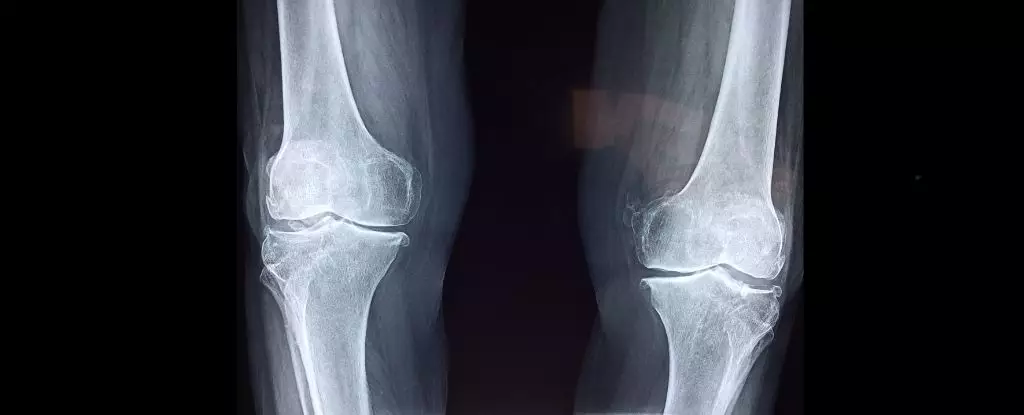Osteoporosis, often referred to as a “silent disease,” has garnered attention as a growing health concern, particularly among older adults. This condition leads to a significant decrease in bone density, rendering bones fragile and increasing susceptibility to fractures, particularly in high-risk areas such as the spine, hips, and wrists. With the National Osteoporosis Foundation estimating that over 10 million Americans are currently living with this disease, alongside an additional 43 million who are deemed at risk due to low bone mass, awareness and education about osteoporosis are more critical than ever. This article delves into the implications of osteoporosis, its risk factors, symptoms, and effective preventive measures that can be adopted.
Osteoporosis can be likened to a ticking time bomb within the body. Its symptoms are often not apparent until a fracture occurs, prompting many to overlook the significance of the disease until it’s too late. With an aging population, coupled with lifestyle choices like smoking, insufficient physical activity, and excessive alcohol consumption, the prevalence of osteoporosis is projected to surge. By the year 2030, approximately 71 million adults in the U.S. are projected to be affected by either osteoporosis or low bone mass. This upward trend necessitates a closer examination of both the factors contributing to the disease and the methods by which individuals can arm themselves against it.
While osteoporosis is often asymptomatic in its early stages, there are subtle signs that should not be overlooked. Height loss may be an indication of underlying compression fractures in the spine; while it’s common to lose 1 to 1.5 inches as one ages, significant height loss—exceeding 2 to 3 inches—can signal severe bone deterioration. Changes in posture, such as a curved back, can also manifest early symptoms of weakened bones. Persistent back pain, frequently resulting from micro-fractures, is another concerning warning sign to watch for.
Recognizing these changes in the body is crucial for early intervention. Osteoporosis not only impacts physical health but can lead to debilitating pain, decreased mobility, and a diminished quality of life. As nearly 9 million osteoporotic fractures occur globally each year, the urgency of early diagnoses and proactive measures cannot be overstated.
Although osteoporosis cannot be wholly cured, individuals can take substantial steps to minimize their risk through dietary adjustments. Calcium and vitamin D are fundamental for maintaining bone health. Adults should aim to consume at least 1,200 milligrams of calcium daily, ideally sourced from foods like dairy products, dark leafy greens, and fortified plant-based alternatives. For those who are less sun-exposed or have darker skin, supplementing with vitamin D may be necessary to ensure adequate absorption of calcium.
Moreover, creating a balanced intake throughout the day—rather than consuming large quantities all at once—can further enhance the body’s ability to utilize these essential nutrients effectively. Individuals diagnosed with osteoporosis may need to consult healthcare professionals about possible medication to further bolster bone strength.
An active lifestyle is paramount in combating the effects of osteoporosis. Engaging in weight-bearing exercises is particularly effective in enhancing bone density. Activities like brisk walking, jogging, and strength training can provide substantial benefits. Ideally, individuals should engage in 30 minutes of weight-bearing activity at least four times a week while incorporating resistance exercises to boost muscle strength.
Equally important is avoiding lifestyle habits that can exacerbate the risk of bone loss. Smoking and high alcohol consumption have been positively correlated with decreases in bone density, highlighting the necessity of healthy habits. Moreover, attention to fall prevention through balance training can significantly mitigate the risk of sustaining fractures.
The importance of early screening cannot be overstated. Women are advised to start undergoing osteoporosis screening at 65, while men should consider doing the same if they possess risk factors. Techniques like bone density scans and spinal imaging are invaluable in diagnosing osteoporosis and identifying any compression fractures. These procedures, along with thorough medical histories and evaluations, can pave the way for effective management of the disease.
While osteoporosis presents a significant challenge, particularly for older adults, proactive measures can substantially diminish its impact. Understanding the signs and symptoms, adopting a nutritious diet, engaging in regular physical activity, and committing to regular screenings are all integral to maintaining strong bones. By prioritizing bone health and taking the necessary steps toward prevention, individuals can take control of their health and lead a more vibrant life.


Leave a Reply